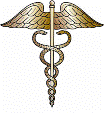Authors
Deborah L. Hodge, Laboratory of Experimental Immunology, Cancer and Inflammation Program, Center for Cancer Research, National Cancer Institute-Frederick, MD 21702, USA. Electronic address: hodged@mail.nih.gov.Follow
Cyril Berthet, Mouse Cancer Genetics Program, Center for Cancer Research, National Cancer Institute-Frederick, Frederick, MD 21702, USA; Oncodesign, 20 Rue Jean Mazen, Dijon 21076, France. Electronic address: cberthet@oncodesign.com.Follow
Vincenzo Coppola, Mouse Cancer Genetics Program, Center for Cancer Research, National Cancer Institute-Frederick, Frederick, MD 21702, USA; Department of Molecular Virology, Immunology and Medical Genetics at The Ohio State University, 460 W. 12th Street, Columbus, OH 43210, USA. Electronic address: Vincenzo.Coppola@osumc.edu.Follow
Wolfgang Kastenmüller, Lymphocyte Biology Section, Laboratory of Systems Biology, National Institute of Allergy and Infectious Diseases, National Institutes of Health, Bethesda, MD 20892, USA; Cellular Interactions and Immunimaging Institutes of Molecular Medicine and Experimental Immunology (IMMEI), University of Bonn, Sigmund-Freud Str. 25, Bonn 53105, Germany. Electronic address: wkastenm@uni-bonn.de.Follow
Matthew D. Buschman, Laboratory of Experimental Immunology, Cancer and Inflammation Program, Center for Cancer Research, National Cancer Institute-Frederick, MD 21702, USA; Division of Endocrinology and Metabolism, University of California, San Diego, 9500 Gilman Drive, La Jolla, CA 92093, USA. Electronic address: mbuschman@ucsd.edu.Follow
Paul M. Schaughency, Laboratory of Experimental Immunology, Cancer and Inflammation Program, Center for Cancer Research, National Cancer Institute-Frederick, MD 21702, USA; Department of Molecular Biology and Genetics, The Johns Hopkins University School of Medicine, Baltimore, MD 21205, USA. Electronic address: pschaugh@jhmi.edu.Follow
Hidekazu Shirota, Laboratory of Experimental Immunology, Cancer and Inflammation Program, Center for Cancer Research, National Cancer Institute-Frederick, MD 21702, USA; Department of Clinical Oncology, Tohoku University Hospital, 1-1 Seiryo-machi, Aoba-ku, Sendai 980-8574, Japan. Electronic address: shirotah@idac.tohoku.ac.jp.Follow
Anthony J. Scarzello, Laboratory of Experimental Immunology, Cancer and Inflammation Program, Center for Cancer Research, National Cancer Institute-Frederick, MD 21702, USA. Electronic address: scarzean@mail.nih.gov.Follow
Jeff J. Subleski, Laboratory of Experimental Immunology, Cancer and Inflammation Program, Center for Cancer Research, National Cancer Institute-Frederick, MD 21702, USA. Electronic address: subleskj@mail.nih.gov.Follow
Miriam R. Anver, Laboratory Animal Science Program (LASP), Science Applications International Corporation (SAIC), National Cancer Institute, Frederick, MD 21702, USA. Electronic address: anvermr@mail.nih.gov.Follow
John R. Ortaldo, Laboratory of Experimental Immunology, Cancer and Inflammation Program, Center for Cancer Research, National Cancer Institute-Frederick, MD 21702, USA. Electronic address: ortaldoj@mail.nih.gov.Follow
Fanching Lin, Laboratory of Experimental Immunology, Cancer and Inflammation Program, Center for Cancer Research, National Cancer Institute-Frederick, MD 21702, USA. Electronic address: fanching.lin@nih.gov.Follow
Della A. Reynolds, Laboratory of Experimental Immunology, Cancer and Inflammation Program, Center for Cancer Research, National Cancer Institute-Frederick, MD 21702, USA. Electronic address: reynoldd@mail.nih.gov.
Michael E. Sanford, Laboratory of Experimental Immunology, Cancer and Inflammation Program, Center for Cancer Research, National Cancer Institute-Frederick, MD 21702, USA. Electronic address: sanfordm@mail.nih.gov.Follow
Philipp Kaldis, Mouse Cancer Genetics Program, Center for Cancer Research, National Cancer Institute-Frederick, Frederick, MD 21702, USA; Institute of Molecular and Cell Biology (IMCB), A*STAR (Agency for Science, Technology and Research), Proteos, 61 Biopolis Drive, Singapore 138673, Republic of Singapore. Electronic address: kaldis@imcb.a-star.edu.sg.Follow
Lino Tessarollo, Mouse Cancer Genetics Program, Center for Cancer Research, National Cancer Institute-Frederick, Frederick, MD 21702, USA. Electronic address: tessarol@mail.nih.gov.Follow
Dennis M. Klinman, Laboratory of Experimental Immunology, Cancer and Inflammation Program, Center for Cancer Research, National Cancer Institute-Frederick, MD 21702, USA. Electronic address: klinmand@mail.nih.gov.Follow
Howard A. Young, National Cancer InstituteFollow
Date of this Version
9-1-2014
Citation
Journal of Autoimmunity 53 (2014) 33-45
http://dx.doi.org/10.1016/j.jaut.2014.02.003
Abstract
We generated a mouse model with a 162 nt AU-rich element (ARE) region deletion in the 3' untranslated region (3'UTR) of the interferon-gamma (IFN-γ) gene that results in chronic circulating serum IFN-γ levels. Mice homozygous for the ARE deletion (ARE-Del) (-/-) present both serologic and cellular abnormalities typical of patients with systemic lupus erythematosus (SLE). ARE-Del(-/-) mice display increased numbers of pDCs in bone marrow and spleen. Addition of IFN-γ to Flt3-ligand (Flt3L) treated in vitro bone marrow cultures results in a 2-fold increase in pDCs with concurrent increases in IRF8 expression. Marginal zone B (MZB) cells and marginal zone macrophages (MZMs) are absent in ARE-Del(-/-) mice. ARE-Del(+/-) mice retain both MZB cells and MZMs and develop no or mild autoimmunity. However, low dose clodronate treatment in ARE-Del(+/-) mice specifically eliminates MZMs and promotes anti-DNA antibody development and glomerulonephritis. Our findings demonstrate the consequences of a chronic IFN-γ milieu on B220(+) cell types and in particular the impact of MZB cell loss on MZM function in autoimmunity. Furthermore, similarities between disease states in ARE-Del(-/-) mice and SLE patients suggest that IFN-γ may not only be a product of SLE but may be critical for disease onset and progression.



Comments
U.S. government work